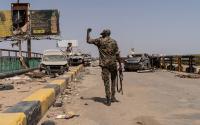13 August 2006Joseph B Frazier
The oxygen-starved "dead zone" along America's Pacific Coast that is causing widespread crab and fish deaths is worse than first thought, scientists said.
The dead zone is a 70-mile stretch of water along the Continental Shelf in Oregon, between Florence and Lincoln City. In some areas the seabed is strewn with dead marine life - and the weather appears to be the culprit.
Oregon State University (OSU) scientists looking for weather changes that could reverse the situation are not finding them. Levels of dissolved oxygen critical to marine life are at their lowest since the first dead zone was identified in 2002. It has returned every year.
Strong winds pushed a low-oxygen pool of deep water toward shore, suffocating marine life, said Jane Lubchenco, a professor of marine biology at OSU.
After inspecting the area via a camera on a remote-controlled submarine, she said: "Thousands of dead crab and molts were littering the ocean floor. Many sea stars were dead, and the fish have either left or died."
The effect on commercial fishing isn't yet known, said Hal Weeks, a marine ecologist with the Oregon Department of Fish and Wildlife. Al Pazar, chairman of the Oregon Dungeness Crab Commission, and a crab fisherman out of Newport, said this season is likely to be the second best ever, but most crabs are caught before the appearance of the dead zones.
Dissolved oxygen readings taken last Tuesday off Cape Perpetua, north of Florence, are between 3 per cent and 10 per cent of levels needed for survival, and near zero in some areas.
Smaller zones have been found along the Oregon and Washington coasts.
http://news.independent.co.uk/environment/article1218888.ece






